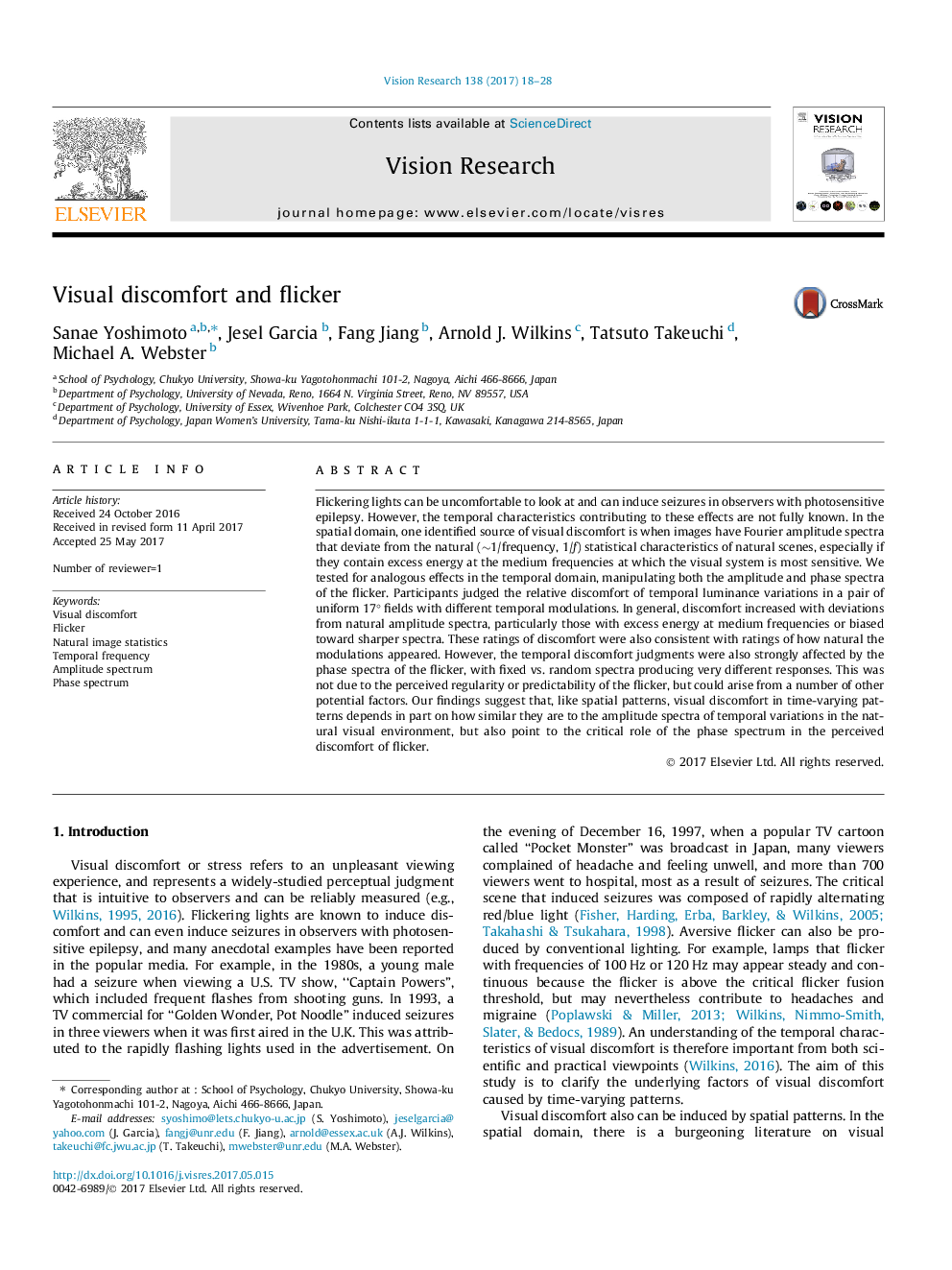| Article ID | Journal | Published Year | Pages | File Type |
|---|---|---|---|---|
| 5705842 | Vision Research | 2017 | 11 Pages |
Abstract
Flickering lights can be uncomfortable to look at and can induce seizures in observers with photosensitive epilepsy. However, the temporal characteristics contributing to these effects are not fully known. In the spatial domain, one identified source of visual discomfort is when images have Fourier amplitude spectra that deviate from the natural (â¼1/frequency, 1/f) statistical characteristics of natural scenes, especially if they contain excess energy at the medium frequencies at which the visual system is most sensitive. We tested for analogous effects in the temporal domain, manipulating both the amplitude and phase spectra of the flicker. Participants judged the relative discomfort of temporal luminance variations in a pair of uniform 17° fields with different temporal modulations. In general, discomfort increased with deviations from natural amplitude spectra, particularly those with excess energy at medium frequencies or biased toward sharper spectra. These ratings of discomfort were also consistent with ratings of how natural the modulations appeared. However, the temporal discomfort judgments were also strongly affected by the phase spectra of the flicker, with fixed vs. random spectra producing very different responses. This was not due to the perceived regularity or predictability of the flicker, but could arise from a number of other potential factors. Our findings suggest that, like spatial patterns, visual discomfort in time-varying patterns depends in part on how similar they are to the amplitude spectra of temporal variations in the natural visual environment, but also point to the critical role of the phase spectrum in the perceived discomfort of flicker.
Keywords
Related Topics
Life Sciences
Neuroscience
Sensory Systems
Authors
Sanae Yoshimoto, Jesel Garcia, Fang Jiang, Arnold J. Wilkins, Tatsuto Takeuchi, Michael A. Webster,
